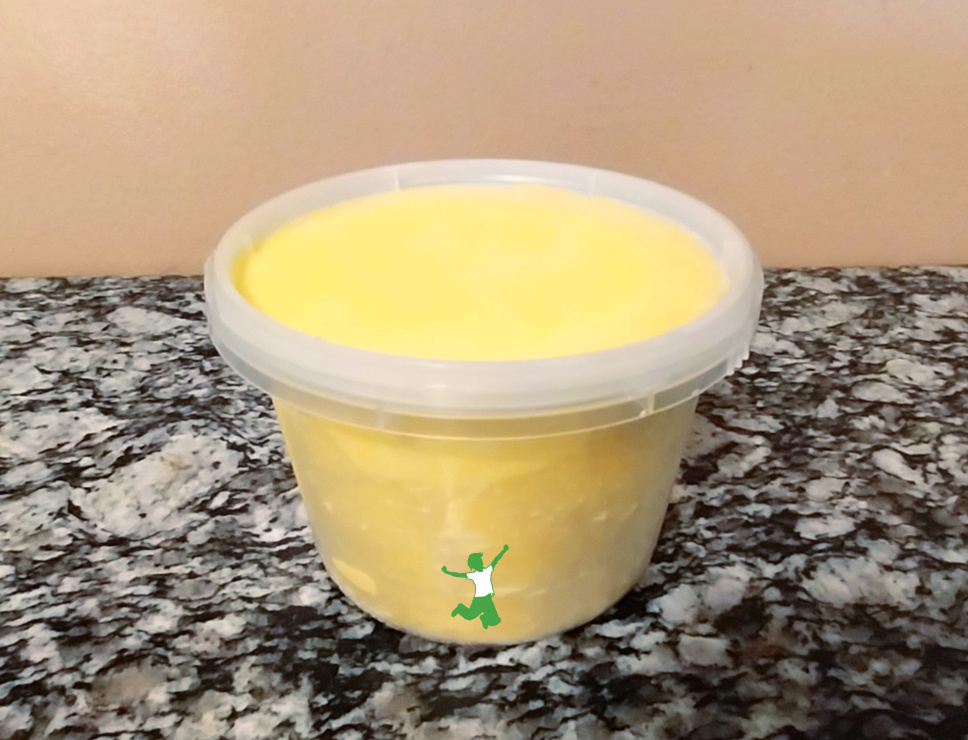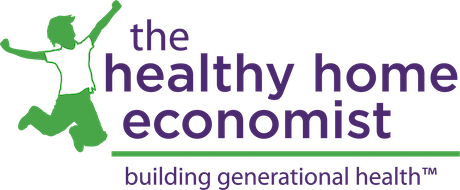The benefits of the Wulzen Factor, known for its anti-stiffness properties among other health advantages when consuming foods that contain it.

After two decades of writing about traditional foods (I started in February 2005…time sure flies!!), I can’t believe I’ve never written about the Wulzen Factor, an amazing and highly elusive fat-soluble nutrient.
Today is the day that this longstanding oversight is finally corrected. 😊
I credit the Wulzen Factor as the primary reason I am still doing the same outdoor activities today that I was doing in my teens and twenties.
My joints are also more flexible today than they were back then!
Surprisingly, many people who otherwise follow and espouse the benefits of traditional diet have never heard of the Wulzen Factor!
Let’s take a look at this elusive and yet essential nutrient, why you absolutely need it in your diet, and what foods contain it so that you can enjoy its benefits in your life!
What is the Wulzen Factor?
The term “Wulzen Factor” refers to the heat-sensitive substance known chemically as stigmasterol.
This fat-soluble vitamin regulates phosphorous metabolism in the body.
It was identified by researcher Dr. Rosalind Wulzen, who earned her doctorate in physiology and zoology from the University of California, Berkeley in 1912. (1)
Identification of the Wulzen Factor emerged from experiments with guinea pigs during Dr. Wulzen’s tenure as a faculty member at Oregon State University, starting in 1933.
Through Dr. Wulzen’s research in the late 1930s and early 1940s, she observed that a diet lacking certain nutrients caused wrist stiffness and calcification. (2, 3)
The missing nutrient was later identified as plentifully present in raw milk and cream.
Most importantly, Dr. Wulzen also found that this joint stiffness and calcification could be reversed by adding raw dairy back into the diet.
She documented this finding in the paper titled “Effects of Milk Diets on Guinea Pigs,” published in the American Journal of Physiology, that she co-authored with A.M. Bahrs. (4)
The paper details how guinea pigs on a diet of raw whole milk thrived, while those on pasteurized milk developed joint stiffness.
The difference pointed to a critical, heat-sensitive nutrient that was later dubbed the Wulzen Factor.
Dr. Wulzen and Dr. Price
You may have noticed from the timeframes of Dr. Wulzen’s research described above that she was a contemporary of Dr. Weston A Price, author of the book Nutrition and Physical Degeneration.
Published in 1939, Nutrition and Physical Degeneration focuses on Dr. Price’s observations of 14 distinct traditional cultures from around the world and the impact of their indigenous diets on dental and overall health.
He emphasized the importance of fat-soluble vitamins, particularly A, D and what he called “Activator X,” later identified as vitamin K2. (5)
These vitamins are found in nutrient-dense foods such as butterfat, organ meats, egg yolks, and fish eggs.
In his book, Dr. Price extensively discusses the nutritional superiority of raw, unprocessed animal food, especially raw dairy from grass-fed animals.
Thus, while Dr. Weston A. Price did not specifically mention the “Wulzen Factor” in his writings that I have come across, the concepts he explored in Nutrition and Physical Degeneration share a special kinship of food philosophy with the Wulzen Factor’s implications regarding the benefits of consuming raw, unprocessed animal fats.
What Foods Contain Stigmasterol
Stigmasterol is found in therapeutic amounts in raw animal foods.
Specifically, raw butterfat (raw milk, raw cream, and raw butter) and raw egg yolks would be the most accessible foods to include in the diet on a regular basis to obtain curative amounts.
Raw butter oil would also contain the Wulzen Factor in concentrated amounts, while ghee (heated butter oil) would not.
The important thing to note is that the Wulzen Factor is destroyed by pasteurization, even low-temp, “vat pasteurized” heating methods.
However, freezing raw milk, cream, and butter does not appear to harm stigmasterol.
As evidence of this, Dr. Price wrote about his tests on raw butter that had been frozen for a year. He discovered that there was no degradation of the fat-soluble vitamins after that period of time. (6)
Other Health Benefits from The Wulzen Factor
While the Wulzen Factor is most well-known as the “anti-stiffness” factor for maintaining flexible joints free of calcification, there are other profound benefits from consuming raw animal fats to obtain it as well.
Research discovered that this substance could also serve as protection against hardening of the arteries, cataracts, and calcification of the pineal gland. (7-9)
Thus, the time, expense, and sometimes considerable inconvenience necessary to obtain raw, grassfed dairy for your family’s diet is well worth it!
The Wulzen Factor is one of the best, but interestingly, least known benefits of consuming this highly revered traditional food.
(1, 2) The Wulzen Anti-Stiffness Factor: How Stigmasterol Can Help You Feel Better, Look Younger, Be Fitter, And Spend Less On Health Care
(3) Relation of the “Anti-Stiffness Factor” to Collagen Disease and Calcinosis
(4) American Journal of Physiology, 1941, Vol. 133, p. 500.
(5) On the Trail of the Elusive X-Factor: A Sixty-Two-Year-Old Mystery Finally Solved
(6) FAQ-Dairy
(7) The Skinny on Fats
(8) American Journal of Physical Medicine, 1941, 133
(9) Physiological Zoology, 1935 8:457








Unfortunately, I have tried for decades to get raw milk and cream with no real luck. I live in Oregon, where the only way is to “buy” a part of a cow, and get weekly raw products. Also, unfortunately, those products are extremely expensive and there are only 2 or 3 farms that even do this, and they are over 100 miles away. (1 way) I do agree with the fact that more expensive when it comes to health is well worth it, but not that much more expensive. I freeze heavy cream and butter all the time. Freezing does create small crystals in cream, but it doesn’t harm it in any other way. I would LOVE to have raw dairy products! Even my daughter in SoCa has access to raw milk (so far) but apparently “they” are attempting to ban raw dairy there now, too. I have raised cattle, but not dairy. I’m not sure at my age if learning such a new skill is doable….
Oh, I have recently become aware that many products labeled “grass fed” don’t always indicate organic. If the grass that cattle feed on is fertilized and heavily sprayed with toxic pesticides, it isn’t a healthy choice at all. So make sure grass fed is combined with organic, and indicated grass FINISHED as well.
Great news Sarah! I covered this article in my radio show today. I love your work. Always give your website my radio coverage. Thank you for the intelligence and generosity of our Ancestors and to you Sarah… for writing and sharing about the upmost issue of our times. The return to what’s really important… supporting local farms, real farm food, not factory food like stuff, yes to herbs and food as medicine, supporting local business, and Home economy is cool vibe!!
Wadogh
Thank you so much!
I live in Canada where raw milk is unavailable.
Will Swiss cheese and gruere cheese imported from Switzerland that is made with raw milk contain the Wulzen factor?
Yes it will if it is grassfed.
If only raw butter didn’t cost a fortune…I priced it here in Sarasota at $11 per HALF POUND!
Worth. Every. Penny.
Can’t put a price on not being stiff and having full mobility not to mention full critical thinking abilities from a fully functioning pineal gland.
The discovery of the Wulzen Factor highlights the importance of consuming foods in their natural state. The fact that pasteurization can remove this vital nutrient raises concerns about the impact of food processing on our health.
Like a previous commenter, I live in Canada. I can get raw cheese made with sheep, would this have it.
I do have my own chickens s could look at raw egg yolk recipes.
Yes, raw cheese from sheep milk contains the Wulzen factor!! Raw egg yolks are an excellent source as well.
This is timely. I enjoy reading vintage cookbooks, pre-microwave era cookbooks. Last night I was reading the Culinary Arts Institute Encyclopedic Cookbook 1971. Many older cookbooks will have sections on vitamins and nutrients. Last night it hit me that there was a trend in focusing on calcium, Vitamins A, B, C, iron, copper and phosphorous. Older cookbooks (and even gardening books (1948-ish)) also encourage people to focus on eating green and orange veggies in the diet. Thanks for this information. For curiosity, this cookbook lists the foods you did, but also organ meats, Brazil nuts and other nuts, and brassica veggies.
Very interesting article thanks Sarah, haven’t heard of this before. I grew up on a conventional dairy farm where antibiotics and other meds were uses regularly. Now lactose intolerant- any advice in terms of reversing this? Or are regular raw egg yolks the way forward?
I’m also studying homeopathy and currently delving into the bowel nosodes to see what gains I can make here.
Many thanks!
Hi Sarah, I love your emails and all the information you share.
This is fascinating. By any chance, besides the raw milk products you listed, are there any supplements? I have never enjoyed milk. We do use cultured butter through Azure Standard. And only until 2 weeks ago, we’ve never had raw milk. Since we recently moved to SC from NC, we can buy raw milk at a nearby farm. It’s illegal in NC to buy it🙄 Maybe that’s changed, but for years we were told it was illegal. I am hoping for a supplement as the alternative.
Blessings,
Jill
No supplements for the Wulzen Factor that I’ve come across. It is heat and processing sensitive. Must get from food.